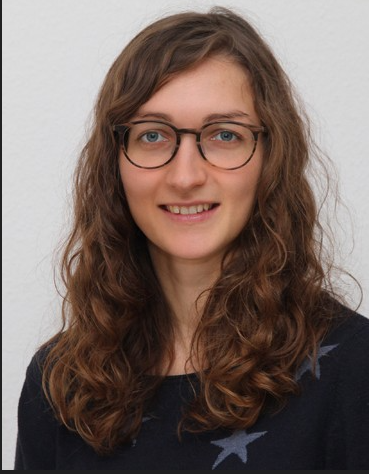Chip-integration of visible extended cavity lasers\\using SiN feedback circuits
Lisa Winkler is a PhD student in the department Laser Physics & Nonlinear Optics. (Co)Promotors are prof.dr. K.J. Boller and dr. P.J.M. Slot from the faculty of Science & Technology.
 This thesis describes investigations into extended cavity diode lasers, formed by hybrid integration of semiconductor optical amplifiers with silicon nitride feedback circuits. Beginning with improving frequency stability in the infrared telecom range, we present investigations and progress in opening up the visible spectral range, reaching unprecedented spectral control in terms of tuning and optical linewidth.
This thesis describes investigations into extended cavity diode lasers, formed by hybrid integration of semiconductor optical amplifiers with silicon nitride feedback circuits. Beginning with improving frequency stability in the infrared telecom range, we present investigations and progress in opening up the visible spectral range, reaching unprecedented spectral control in terms of tuning and optical linewidth.
In chapters 1 and 2, we provide a short introduction to the field of chip-integrated lasers and briefly recall the theoretical aspects of interest for constructing chip-integrated tunable lasers with high coherence. In chapter 3, we investigate the intrinsic stability of an infrared hybrid-integrated laser. We quantify the long-term stability of such a laser and investigate how it can be further improved using active stabilization for the first time. For absolute stability several days, we lock the laser frequency to an acetylene absorption line, limiting the frequency deviations of the laser to less than 12 MHz over 5 days.
In the following chapters, we investigate hybrid integrated lasers operating in the red spectral range, where increased scattering and loss, as well as smaller alignment tolerances pose additional challenges. In chapter 4, we present hybrid-integrated extended cavity diode lasers tunable around 637 nm, with a gain-wide spectral coverage of 8 nm. This tuning range allows addressing nitrogen vacancy centers and includes the wavelength of helium-neon lasers. Best performance shows wide mode-hop free tuning up to 97 GHz and a narrow intrinsic linewidth of 10 kHz with a fiber-coupled output power of 2.5 mW. Full integration and packaging provide high intrinsic stability and will enable integration into complex optical systems.
Chapter 5 presents a mode-locked laser in the same spectral region, illustrating the wide range of laser types that can be built using photonic integrated circuits. Based on a GaAs gain chip and a SiN feedback circuit, we demonstrate the first chip-integrated mode-locked diode laser in the visible using an integrated photonic circuit for cavity extension. At a center wavelength of 642 nm, the laser shows an average output power of 3.4 mW, with a spectral bandwidth of 1.5 nm and an RF linewidth of 40 kHz, at a repetition rate of 7.84 GHz.
In chapter 6, we demonstrate a photonic integrated laser with an ultra-narrow linewidth of only 750 Hz, which is a record-low for the visible. This is achieved by joining the two widespread concepts of ECDLs and self-injection locking. Here, we present preliminary measurement results as a proof of principle.
Chapter 7 concludes the thesis, providing an outlook to possible future developments of chip-integrated lasers.





